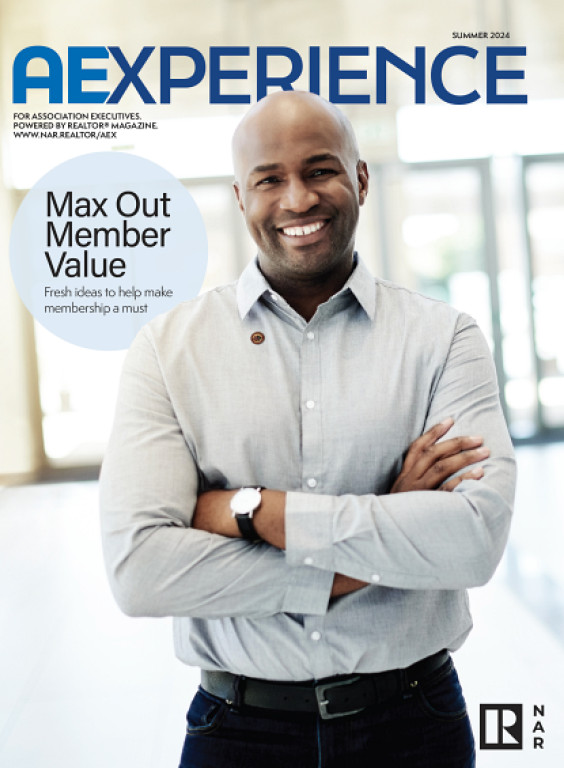One of the primary functions of an association’s board of directors is to identify new candidates for leadership roles. Sometimes these candidates are identified by a nominating committee, sometimes by a nominating process that includes membership support petitions, and sometimes via last-minute suggestions by members, staff and acquaintances. But one thing used to be universal: Most of the time, these candidates were older and had dedicated years to the profession—and thus needed little preparation before stepping into a leadership role.
It’s quite different today when organizations need to invest in-depth effort into developing new leadership.
The environment for advancement in REALTOR® associations is challenged now more than ever by how long members are willing to wait to move up through the ranks of the association. Candidly, it is now just the way of things, and as we move through the many generations that currently make up membership, the time-to-opportunity curve is becoming more compressed. No longer are many younger members willing to invest decades into developing a leadership presence to be recognized as a candidate for higher-ranking leadership positions.
So, the challenge for current leaders becomes this: How do we accelerate the development of members of the board of directors toward the executive level?
Bright Idea
Here was my approach. Shortly after arriving in 2007 as the association executive for the Aspire North Board of REALTORS®, I asked the board to consider launching a reverse mentor program. This was a pilot plan designed for newer members—primarily drawn from the pool of the Rookie of the Year Award winners, but not limited to those candidates. The purpose of the reverse mentor program was twofold. First, the candidate would be hand-picked by the incoming president to be a direct adviser to said president, and second, the candidate would become a sitting member of the board of directors and would be expected to be present at every board meeting and special function.
The one caveat to this arrangement was that the reverse mentor would have no voting power on the board, yet they could weigh in on every discussion. From what they observed and learned, they could then share their opinion with the president—and even inform the board itself—from their unique perspective as a member just coming into the business.
Benefits on Both Sides
When the board sanctioned the program in 2009, social media was just migrating into the business of real estate, and the reverse mentors were very helpful in pointing out new business models and marketing tools. Those Gen Xers and Millennials taught Baby Boomers and Silent Generation members the power of these emerging technologies.
Sometimes, too, a board of directors can get stale in its thinking. When that happens, the order of things typically follows the “We’ve always done things this way” approach when any new ideas and solutions try to deviate from the tried-and-true path. The reverse mentor program helps challenge this mantra by adopting the oft-used axiom, “If you always do what you’ve always done, you’ll always get what you’ve always got.” For us, “step out of the zone and consider some risk” became an alternative approach.
Presidents who took the time to consult with their reverse mentors also gained two distinct advantages: a shift in their perspective brought on by someone who had a fresh view of the industry and the world, and the ability to manifest a younger, more energetic version of themselves—one who ultimately possessed a keen understanding of how technology was rapidly changing the roles of sales agents and brokerage models.
Conversely, the reverse mentors gained much-sought-after approval, respect and acknowledgement by leaders in their chosen profession, and an accelerated pathway to leadership, and local, state and national recognition. While several of the reverse mentors also were a part of the National Association of REALTORS®’ Young Professionals Network, the reverse mentors were able to build relationships and friendships that transcended the crowd of younger members to include icons in their industry.
“If you always do what you’ve always done, you’ll always get what you’ve always got.”
A Decade Later
Since the first reverse mentor was appointed and sworn in in 2010, our association has had seven reverse mentors ascend to the presidency of our board. Once the reverse mentors completed their one-year journey, their president typically engaged them in the process of becoming an elected board member. Because they gained knowledge of the board environment, governing documents and processes during their experience, several of these reverse mentors came to the election knowing exactly what to expect and what would be asked of them.
My first reverse mentor left the real estate industry for a few years and then returned. Once qualified, he immediately ran for the board, saying the experience he had early on inspired him to do so. Later he ran for and served as 2022 president and worked closely with his own reverse mentor. He now owns a brokerage specializing in the luxury homes market and finished his immediate past president responsibility at the end of 2023.
I’m expecting many more fullcircle moments as the reverse mentor program continues to engage young members, inspire leadership and just make our association better.















